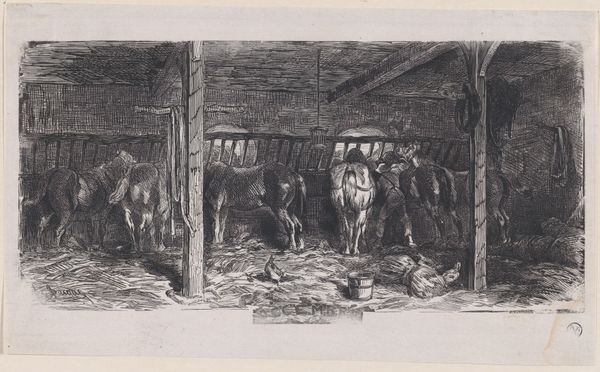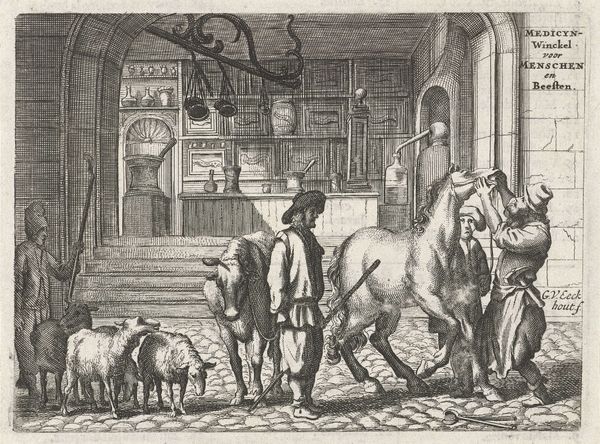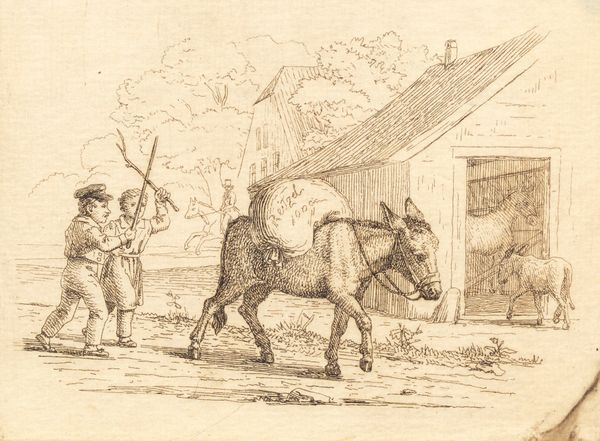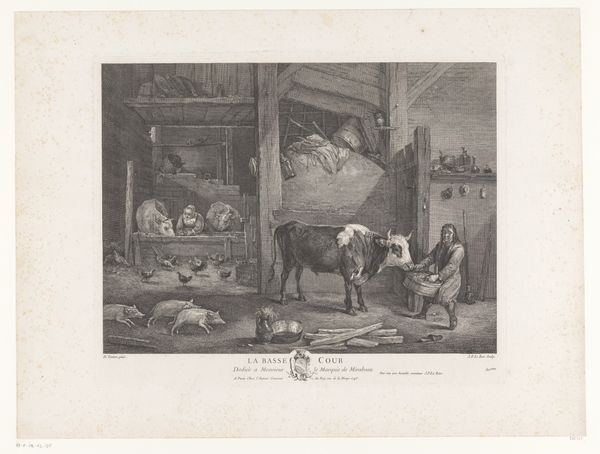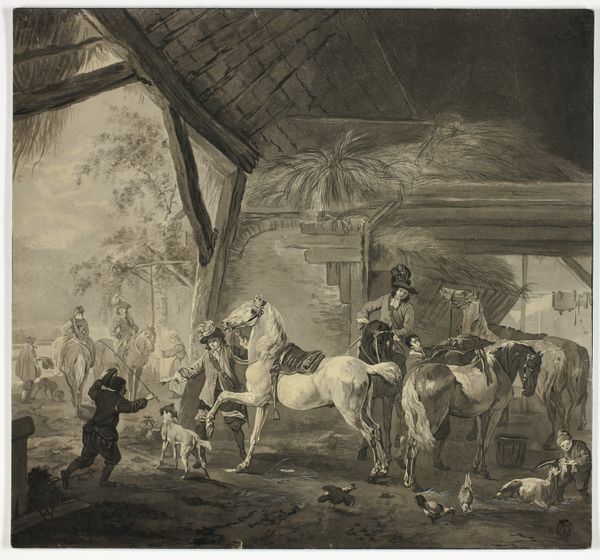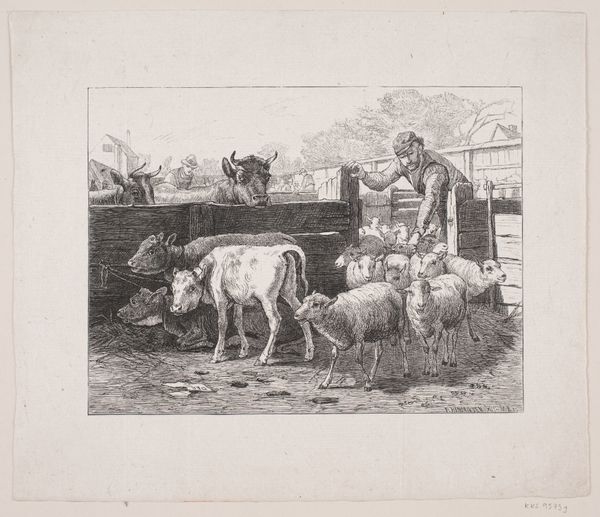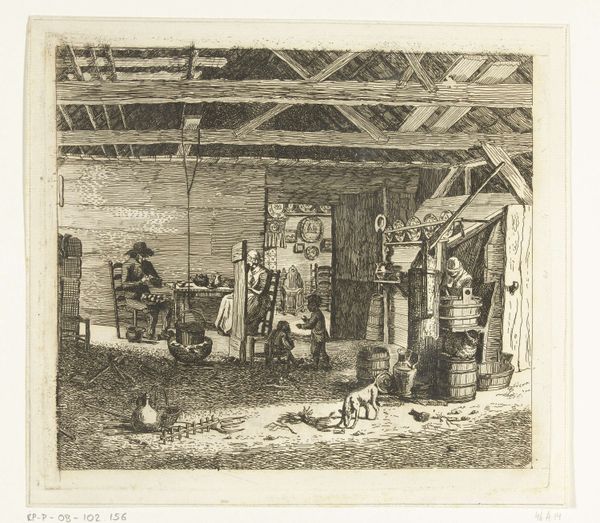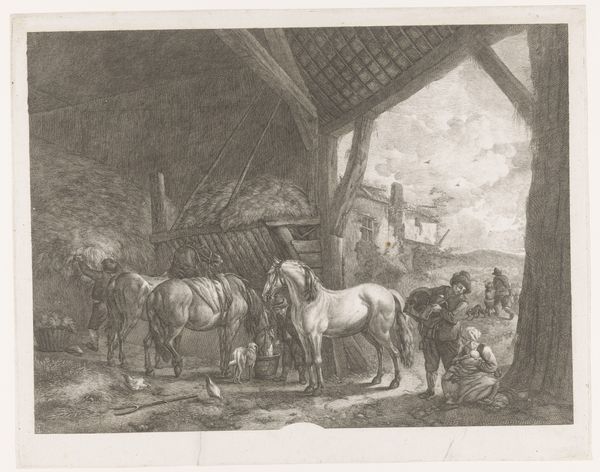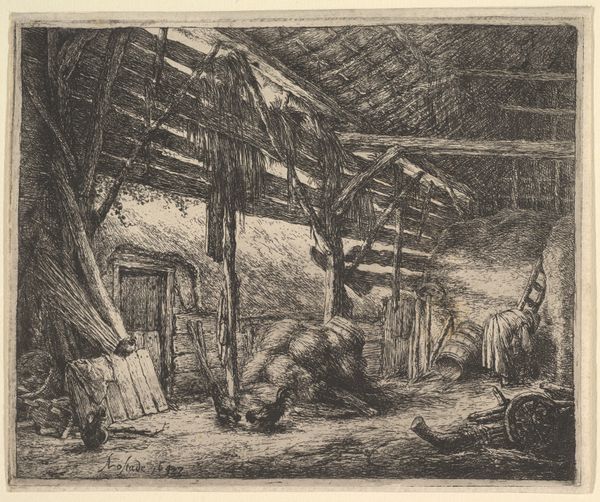
drawing, print, watercolor, pencil
#
drawing
# print
#
landscape
#
watercolor
#
pencil
#
15_18th-century
#
genre-painting
#
watercolor
#
realism
Dimensions: 3 5/8 x 4 7/8 in. (9.21 x 12.38 cm) (image)4 x 5 1/4 in. (10.16 x 13.34 cm) (sheet)
Copyright: Public Domain
Editor: Here we have "Winter," a watercolor, pencil and print drawing from 1798, currently residing at the Minneapolis Institute of Art. I’m struck by the muted palette and the somewhat melancholic feeling it evokes, a simple scene made with such detail... What can you tell me about it? Curator: The image resonates with the quiet hardship of rural life, doesn’t it? Consider the recurring symbolism of winter in art; it often represents not only physical cold but also emotional barrenness, death, and the end of things. And yet, within this "Winter" scene, there is warmth, a humble interior filled with sheep, symbols of innocence and docility but also provision and potential prosperity. Editor: So, are you saying it's not just about the gloominess of winter? That the sheep represent a hope for a better future? Curator: Precisely! Think about the two figures. We have what seems to be a father and son in humble attire, possibly tending to the flock. What emotions might they evoke in the viewer? Editor: They appear thoughtful. Maybe concerned? The young boy certainly does. Their presence offers a human connection within this natural, somewhat stark setting. Is the presence of those two figures as central to understanding this work? Curator: Indeed, these figures also echo the changing social fabric of the late 18th century. How do you interpret the role of children in genre paintings? Consider childhood innocence against the backdrop of a sometimes-cruel world. What statement could that contrast evoke? Editor: Wow, that's fascinating! I see how all these different components, even small details, really create this image's complex tapestry. Curator: And hopefully illuminate not just this single work, but the ways in which art holds memories of our shared past.
Comments
No comments
Be the first to comment and join the conversation on the ultimate creative platform.

